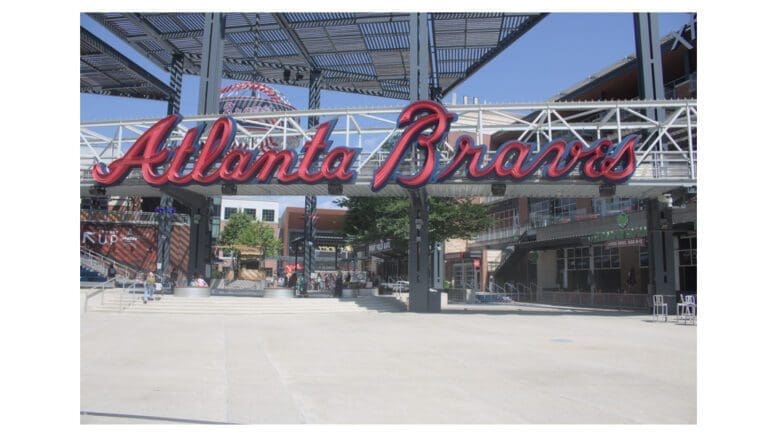By John A. Tures, Professor of Political Science, LaGrange College
Baseball has had all kinds of walk-off endings to epic games, often copied by Hollywood. But none quite match the game-ending double-play executed by the Atlanta Braves in the National League Division Series Game 2 to defeat the Philadelphia Phillies in a dramatic come-from-behind victory, which could be the greatest ending to a game ever.
Most baseball fans think off the walk-off home run as the best way to win a game. Few are as iconic as Los Angeles Dodgers’ Kirk Gibson’s homer off Dennis Eckersley with the Oakland A’s in 1988 as the best example. And Hollywood’s done that before, with Robert Redford in “The Natural” destroying the baseball, and the stadium lights, in the process in the 1984 film set decades earlier.
Atlanta is no stranger to such cinematic lore, but these are far more likely to come during the regular season, usually off the bat of Ozzie Albies or Orlando Arcia. More often than not, the Braves have been victimized by those big blasts, often thanks to a shaky bullpen. Austin Riley and Eddie Rosario’s big walk-off winners were dramatic but short of the stadium walls.
Sometimes the bullpen can be the hero, getting the dramatic strike-out in a key spot, or to see that tired starter dig down to get enough energy and grit for one more strikeout.
Tinseltown has wised up in their depictions of America’s “National Pastime.” You can’t have every dramatic baseball moment end with an HR or a K. There has to be a greater level of creativity involved. Audiences need to be surprised.
So aging has-been pitcher Ben Chapel needs a little help from his defense in the 1999 film “For Love of the Game” based upon a great novella by Michael Shaara to preserve his no-hitter, robbing home runs and getting ground-outs by inches.
The hard-luck Cleveland Indians of the 1989 movie “Major League” had their over-the-hill catcher Jake Taylor boldly point to the fences in a home run boast. But it’s a trick; instead, he bunts so speedy teammate Willie Mays Hayes can race home with the winning run.
If that story sounds familiar to Atlanta fans, they recreated it somewhat when third-string catcher Francisco Cabrera hit an extra-base hit that scored Sid Bream who overcame a limp, yet slid under the tag just like Wesley Snipes did a few years earlier. But even Hollywood never envisioned the silver screen-like ending to NLDS Game 2 the other night.
In the bottom of the eighth inning, I messaged our college’s former chaplain who was at the game. “I know you can’t pray for a sports victory,” I acknowledged. “But could you give the Braves a blessing?” He texted back “Kaylen (fellow preacher) is here with me. We’ll both say one for Atlanta!”
After Austin Riley’s two-run shot put the Braves ahead a few minutes later, it only set the stage for the ninth. With one out, Phillies slugger Nick Castellanos crushed a ball to the wall. Last year’s rookie of the year ran almost 100 feet to catch it, slam into the wall, held on, and proceeded to throw it to Austin Riley who zipped it to Matt Olson at first to catch Phillies star Bryce Harper scrambling back in a baserunning blunder, a moment that literally shook the foundations of Cobb County.
Regardless of the outcome of this year’s postseason run for Atlanta, that will go down as the Braves’ greatest postseason ending to a game, sliding past even Sid Bream’s dramatic run against the Pirates in the 1992 NLCS.
John A. Tures is a professor of political science at LaGrange College in LaGrange, Georgia. His views are his own. He can be reached at jtures@lagrange.edu. His Twitter account is JohnTures2.

